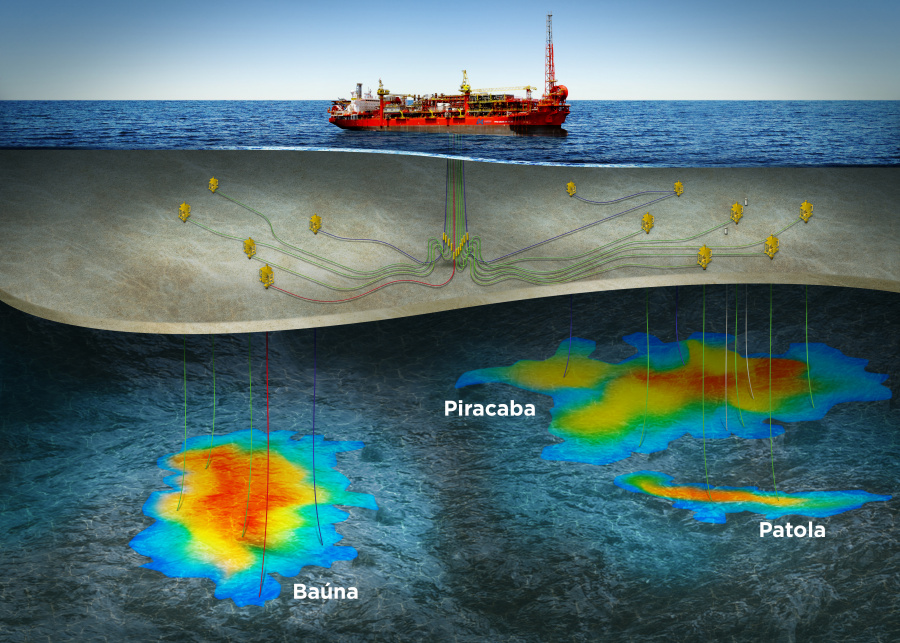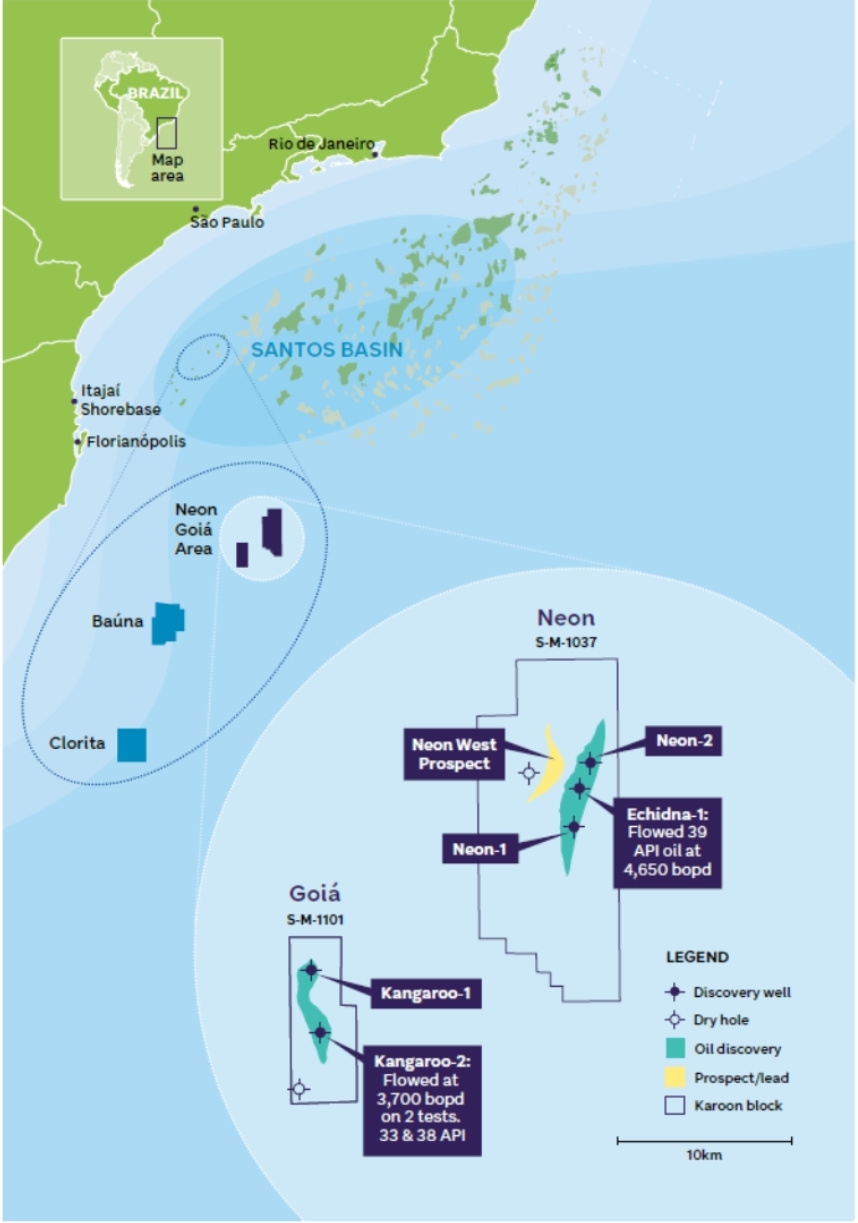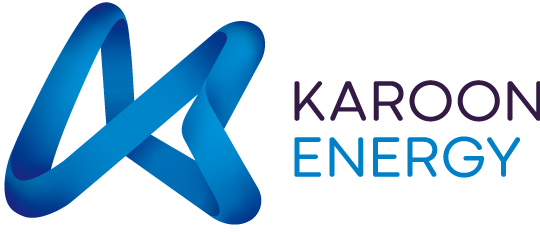Entry into BM-S-40, Santos Basin, offshore Brazil
In November 2020, Karoon completed the acquisition of 100% of Concession BM-S-40, comprising the Baúna and Piracaba producing oil fields and the Patola discovered resource (collectively known as Baúna) from Petrobras.
The acquisition price was US$380 million plus a tiered contingent consideration of up to US$285 million (plus accrued interest), dependent on future oil prices over the period 2022 – 2026.
Petrobras discovered the Baúna and Piracaba fields, located approximately 210 kilometres offshore Brazil in the southern Santos Basin, in 2008. Production commenced in 2013, with rates peaking at approximately 70,000 bopd before the field entered its natural decline phase. In 2019, Baúna was listed for sale, as production rates were no longer considered material to Petrobras. At the time of completion of Karoon’s acquisition in November 2020, production was averaging 14,800 bopd and, of the initial 170 MMbbl 2P recoverable reserves, approximately 138 MMbbl had been produced. The transfer of operatorship from Petrobras to Karoon occurred with no material safety incidents or interruption to production.
Baúna Production
The Baúna development currently consists of 12 sub-sea wells (including two Patola wells which were bought online in CY23), which are connected through sea-bed flowlines to a floating production, storage and offloading facility (FPSO), the Cidade de Itajaí. The FPSO is operated by Altera&Ocyan and is leased back to Karoon. The FPSO has fluid handling capacity of approximately 80,000 bpd and storage capacity of approximately 631,000 bbl of oil.
Baúna crude is a high-quality oil with an API between 33 and 38 degrees and is low in impurities. Oil from the field is sold under a marketing arrangement with Shell Western Supply and Trading Limited (a member of the Royal Dutch Shell Plc group) and realises a price related to Brent crude.
Karoon’s highest priority is on maintaining safe, reliable and responsible operations.
Development Activities
In FY23, Karoon completed the Baúna intervention campaign and Patola development.
After more than 18 months of detailed planning, the Baúna intervention campaign commenced in May 2022. The program involved replacing down-hole electric submersible pumps on two wells (PRA-2 and SPS-92) and installing gas-lift on a third well (SPS-56). The Baúna intervention campaign was completed successfully in the second half of CY22 and added more than 11,000 bopd to production prior to the resumption of natural decline (compared to a target of 5,000-10,000 bopd).
Following the Baúna interventions, Karoon commenced the development of the Patola field. The field, which was discovered by Petrobras in 2011 but not developed, is located within the BM-S-40 production license, adjacent to the Baúna and Piracaba reservoirs. The Patola development comprised drilling two production wells and installing sub-sea production infrastructure which was tied back to the Baúna FPSO. The field came onstream development in March 2023, with initial production rates from each well of approximately 12,000 bopd, compared to an expected total rate of more than 10,000 bopd.
The Baúna intervention program and Patola development were completed safely, on time and within the budgets.

Neon
Neon (formerly known as Echidna) is located 60 kilometres north-east of Baúna and was discovered by Karoon with the Echidna-1 exploration well in 2015. The discovery well encountered 100 metres of oil-bearing reservoir and on test, flowed 4,650 bopd of high quality, 39 deg API oil.
Substantial analysis, engineering and technical work on the potential development of Neon subsequently took place, aimed at establishing how to maximise recovery rates and assessing the commercial potential of the discovery.
In January 2023, Karoon received regulatory approvals to drill two control wells on the Neon oil discovery, which were drilled in January 2023 and March 2023, following the conclusion of the Patola drilling campaign. The two well drilling program was completed for US$45 million, compared to the initial budget of US$65-75 million. Both wells intersected hydrocarbon bearing reservoirs consistent with pre-drill expectations and have reduced the uncertainty around key reservoir parameters. Following this activity, Contingent Resources for Neon were reassessed, resulting in an increase in 1C and 2C Contingent oil Resources of 26% and 9%, respectively. The revised Contingent Resource estimates for the Neon oil discovery are feeding into technical and commercial studies for a potential Neon development, which are currently underway.
The development concepts which are being evaluated include a tie-back to the FPSO at Baúna via a sub-sea pipeline or a stand-alone FPSO production facility, creating a Neon hub that could be utilised for the future development of nearby discoveries. Subject to a potential Neon development exceeding internal technical and commercial hurdles at each assessment gate, Karoon’s preliminary timetable is targeting entry into the Concept Select phase in late first quarter of CY24; entering the Define phase, including Front End Engineering and Design, in early CY25; and a Final Investment Decision in late CY25.
Results from the Neon 2 well have reduced the risk of the Neon West prospect that lies two kilometres west of Neon 2. Karoon has assessed that Neon West has 2U Prospective Resources of 14.8MMbbl, with a geological chance of success estimated at 41%.

Goiá is located 50 kilometres north-east of Baúna in S-M-1101. The oil accumulation was discovered by the Kangaroo-1 exploration well in 2013 and appraised with an additional well (Kangaroo-2) which spudded in November 2014. Similar to Echidna, the Kangaroo wells encountered high quality oil in reservoirs capable of producing at high rates. Details of the results of the two wells are set out in our ASX announcement on 1 August 2013 and 15 February 2015. The Goiá oil discovery, together with nearby opportunities, such as Neon West, will be evaluated to assess the full resource potential of the area and feasibility of a Neon hub-style development plan, which could bring significant production to Karoon.






